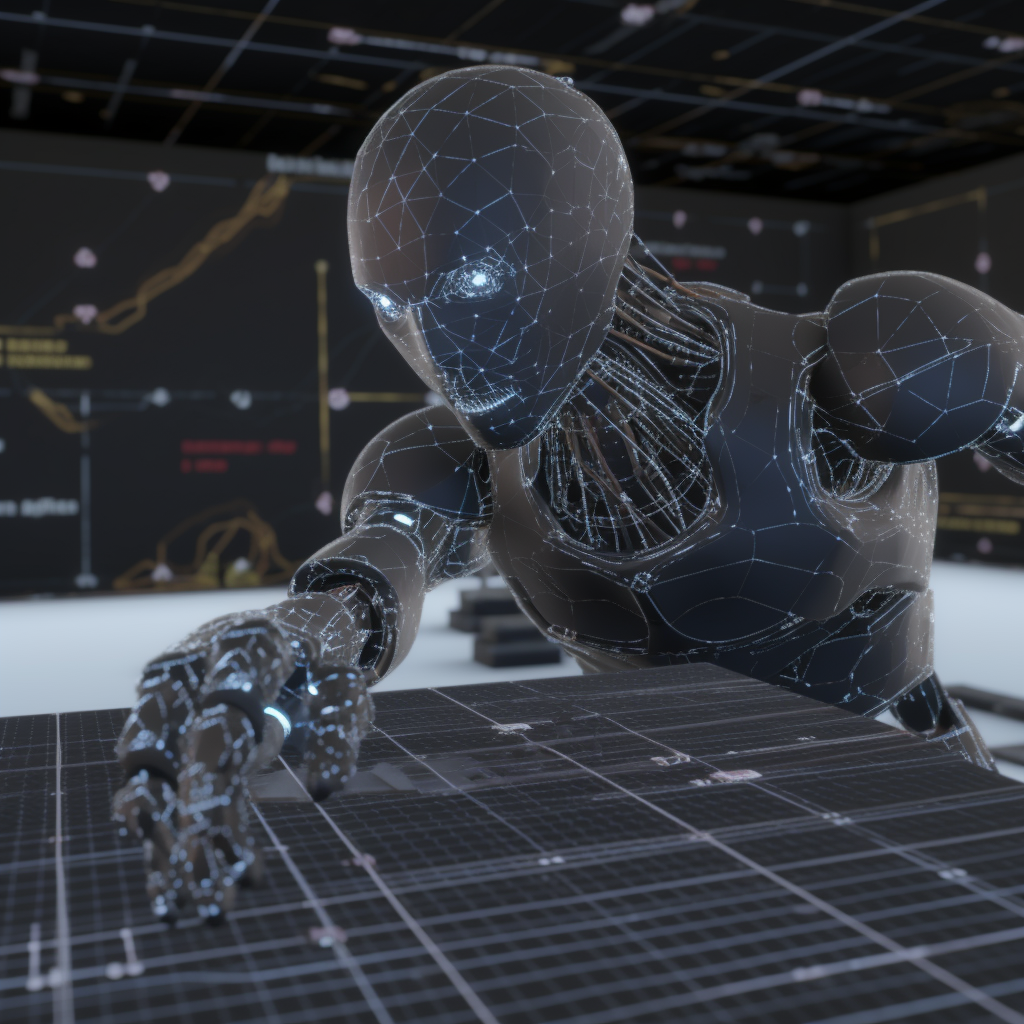It’s no surprise that game physics and AI programming are two of the most important elements in creating an immersive gaming experience – without them, it would be difficult to bring a virtual world alive. From the visual effects that movement creates to the complex decision-making behind enemy AI, crafting these building blocks of games requires understanding basic coding principles as well as game design best practices. In this blog post, we’ll demystify these processes by exploring essential topics such as collision mechanics and pathfinding algorithms for AI-controlled characters. Get ready to start your journey into making exciting gaming experiences with just some foundational knowledge!
Understanding the Physics of Games: Forces, Motion, and Momentum

Games are a popular form of entertainment that draws in people of all ages and backgrounds. However, with the advancement of technology, games are not just for fun anymore. Understanding the physics of games is essential to their creation and development. Forces, motion, and momentum are key components of the physics of games. They allow for realistic gameplay and create a more immersive gaming experience for the player. When designing games, developers must take into account the laws of physics to ensure a smooth and realistic game. By understanding these laws and implementing them into the game design, developers are able to create a captivating and dynamic gaming environment.
Introducing Artificial Intelligence to Your Game – Types of AI and How They Work
Artificial Intelligence (AI) technology has become increasingly popular in the gaming industry. If you’re interested in incorporating AI into your own game, it’s important to understand the different types of AI and how they work. Rule-based AI is a basic form that uses a set of predefined rules to guide its decision-making. On the other hand, learning AI is more complex as it uses machine learning algorithms that enable it to learn and improve on its own. Another popular type is the decision tree, which visually represents possible decisions and outcomes. Regardless of which type you choose, implementing AI into your game can enhance the gameplay experience and add new dimensions to your game’s world.
Creating Engaging Worlds with Animation and Particle Effects
Animating and using particle effects can add a whole new dimension to worlds in animation. Creative use of these tools can make the audience feel immersed in a detailed and engaging environment. From a flick of a spark to a grand explosion, particle effects can greatly enhance the visual storytelling experience. Animation can also bring worlds to life with unique and intriguing movements. By combining the two, animators can create an unforgettable experience for their audience. Through the use of these tools, animators can create a level of detail in their worlds that has never been seen before. With just a few simple clicks, the possibilities become endless.
Building a Game’s Environment through Character Design
Creating a game’s environment is a crucial aspect of game development as it can enhance the overall experience for the players. In order to build a compelling environment, character design plays an important role. It goes beyond designing just the protagonist or antagonist. Each character should be crafted to fit seamlessly into the game’s environment. It is important to consider the character’s physical appearance, personality traits, and cultural background in order to give them depth and add to the game’s world-building. Through the process of character design, game developers can create a cohesive and immersive world that players will want to explore and engage with. By investing in character design, developers can build game environments that feel alive and that players will want to come back to again and again.
Optimizing for Performance – Tips to Avoid Common Programming Pitfalls
As a programmer, there’s no doubt that you’re always aiming to create code that runs as efficiently as possible. Optimization is key to maximizing performance, and it’s important to avoid common programming pitfalls that can slow down your applications. Whether it’s inefficient looping, excessive memory allocation, or redundant code, these issues can put a serious dent in your app’s performance – and your productivity. Fortunately, there are several tips and strategies you can use to optimize your code and sidestep these pitfalls. By focusing on best practices like choosing the right data structures, optimizing algorithms, and avoiding premature optimization, you can ensure that your applications are running at maximum speed and efficiency.
Leveraging Existing Libraries and SDKs for Easier Development
Developers are always on the lookout for ways to make their lives easier and streamline their workflow. Leveraging existing libraries and software development kits can be a great way to accomplish this. With so many options available, it can be overwhelming to know where to start. However, taking the time to research and incorporate these existing resources into your development process can greatly reduce development time and effort. Not only do libraries and SDKs provide pre-built functionality, but they also allow developers to focus on building unique and innovative features. By utilizing existing solutions, developers can get a head start on their projects and ultimately deliver better products to their users.
From learning about physics to understanding artificial intelligence, this has been a comprehensive look at the elements of game development. Even if you already knew some of the concepts, simply understanding how these key components fit together is an invaluable tool for creating more immersive and engaging gaming experiences. Moreover, there are many practical considerations to keep in mind such as optimizing for performance and leveraging existing libraries and SDKs. Ultimately, all of these topics come together in forming a cohesive virtual environment that can exceed even your most ambitious expectations. And with plenty more aspects to explore like sound design and monetization strategies, developing games can be rewarding through both challenges and successes.




